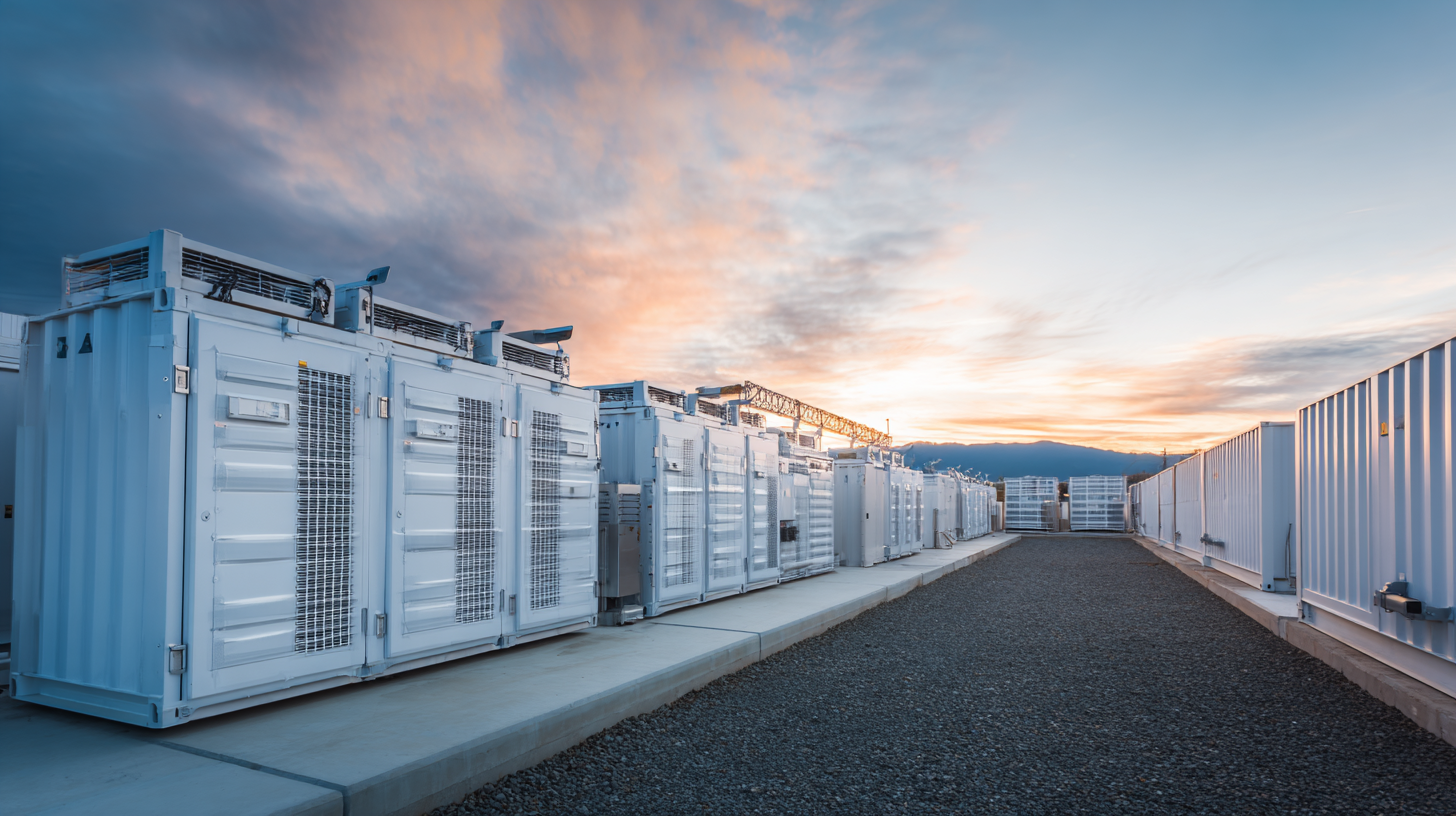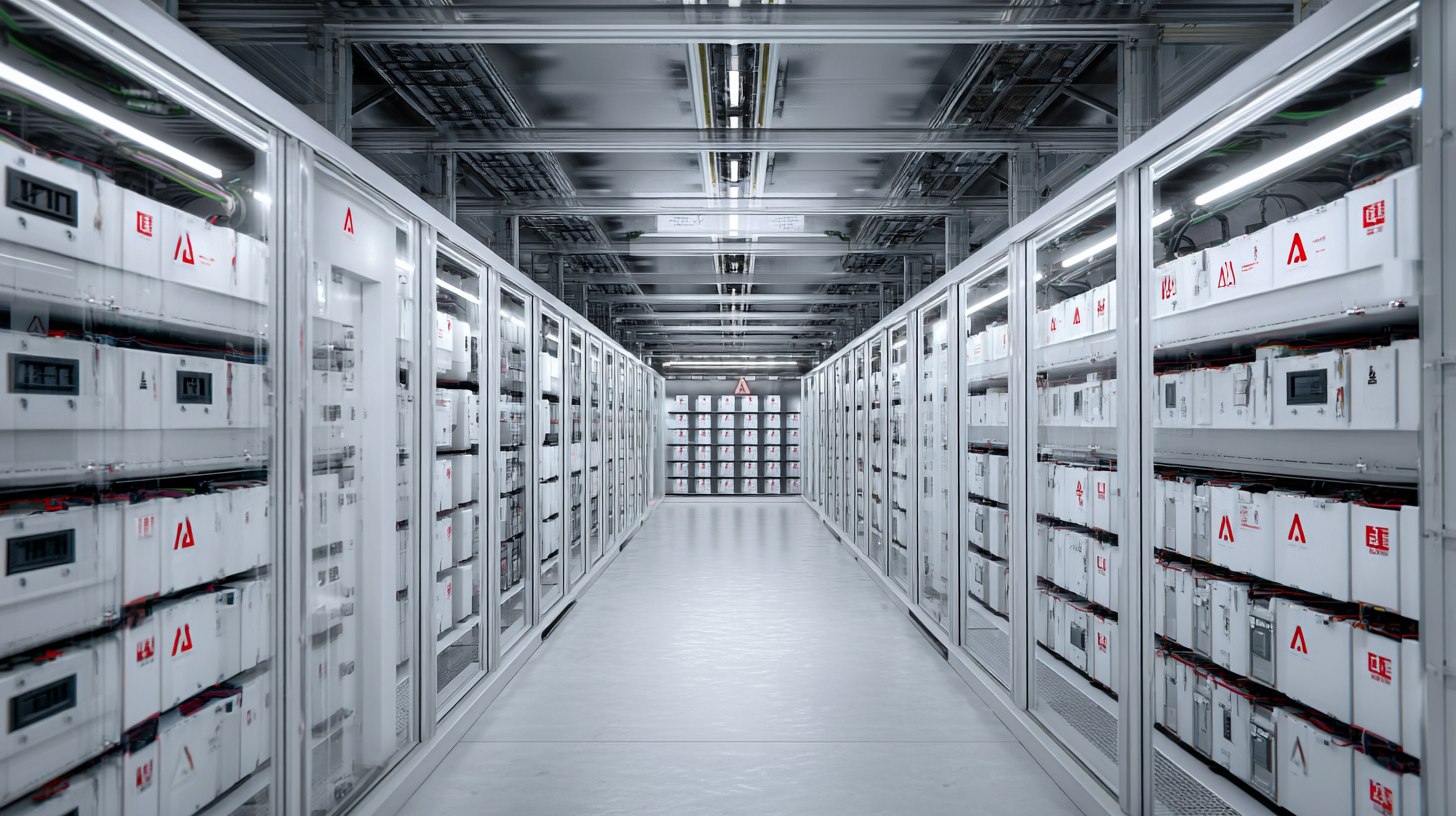Diving into Best Battery Storage Issues That Global Buyers Must Address
As the world shifts towards sustainable energy solutions, the importance of Battery Storage is becoming increasingly pronounced. According to a report by BloombergNEF, the global battery storage market is expected to reach 1,000 GWh of deployed capacity by 2025, indicating a compound annual growth rate of over 30%. This growth is driven by rising demand for renewable energy, improving battery technology, and increasing investments from both governmental and private sectors. However, global buyers must navigate a myriad of challenges, including supply chain constraints, regulatory hurdles, and the need for standardization in technology. Identifying and addressing these issues will be pivotal as countries and corporations seek to optimize energy storage solutions and enhance grid reliability. In this blog, we will dive into the most pressing Battery Storage issues that global buyers need to address and explore actionable strategies to overcome them, ensuring well-informed investment decisions by 2025.

The Growing Importance of Battery Storage in Global Energy Markets
In recent years, battery storage has emerged as a vital component in global energy markets, driven by the increasing demand for renewable energy sources. As more countries transition from fossil fuels to renewable energy, the ability to store excess energy generated from sources like solar and wind becomes crucial. Battery storage systems enable grid stability by storing surplus energy for later use, ensuring that energy supply meets demand even when production fluctuates. This shift towards a more sustainable energy landscape highlights the growing importance of robust battery storage solutions.
The challenges of battery storage, however, cannot be overlooked. Global buyers must address issues such as technological advancements, production costs, and environmental impacts associated with battery manufacturing and disposal. With innovations in battery technology continuously evolving, buyers must remain informed about the latest developments to make strategic investments. Furthermore, the need for sustainable practices in sourcing materials for batteries is becoming increasingly critical, as stakeholders seek to minimize the ecological footprint of energy storage systems. The conversation around battery storage is not just about immediate energy requirements; it encompasses broader implications for environmental sustainability and energy independence.
Diving into Best Battery Storage Issues That Global Buyers Must Address
Key Technological Developments in Battery Storage by 2025
 As the demand for renewable energy sources surges, battery storage technology is set to undergo critical advancements by 2025. According to a report by BloombergNEF, the global lithium-ion battery market is expected to reach a staggering 2.5 terawatt-hours (TWh) by 2025, indicating a compound annual growth rate of around 30%. This explosive growth paves the way for innovations that enhance energy density, reduce costs, and minimize charging times, addressing key issues facing global buyers.
As the demand for renewable energy sources surges, battery storage technology is set to undergo critical advancements by 2025. According to a report by BloombergNEF, the global lithium-ion battery market is expected to reach a staggering 2.5 terawatt-hours (TWh) by 2025, indicating a compound annual growth rate of around 30%. This explosive growth paves the way for innovations that enhance energy density, reduce costs, and minimize charging times, addressing key issues facing global buyers.
Another significant development on the horizon is the adoption of solid-state batteries, which promise to revolutionize energy storage with improved safety and efficiency. A study published by the International Energy Agency highlights that solid-state batteries could potentially double the range of electric vehicles by 2025 while also decreasing production costs by 50%. This shift could alleviate some of the current storage limitations and increase confidence amongst consumers and businesses transitioning to electric solutions.
In addition, advancements in battery recycling technologies are becoming increasingly important. By 2025, it is anticipated that new recycling methods could improve lithium recovery rates up to 95%, as reported by the International Journal of Environmental Research and Public Health. These technological strides not only address supply chain challenges but also support sustainability goals, making battery storage a more appealing investment for global buyers.
Evaluating the Benefits of Different Types of Battery Storage Systems
When evaluating battery storage systems, it’s essential to consider various types and their respective advantages. Lithium-ion batteries, widely recognized for their efficiency and energy density, are increasingly being deployed alongside renewable energy sources, such as solar and wind. However, techno-economic assessments reveal that alternative systems, like Solid Oxide Fuel Cells and Reversible Fuel Cells, can offer competitive Levelized Cost of Storage (LCOS) under certain conditions. These insights are crucial for global buyers aiming to optimize their energy strategies and make informed decisions.
**Tips for Selecting the Right Battery Storage System:**
- Assess your energy needs carefully. Different systems have unique strengths—choose based on efficiency, cost, and storage capacity specific to your application.
- Consider sustainability. Investigate life cycle assessments of battery technologies to understand the environmental impacts and recycling potential of your choices.
- Stay informed about market trends. The rapid evolution of technology and regulatory environments can influence performance and cost, making up-to-date knowledge vital for effective investment.
By addressing these aspects, buyers can effectively navigate the complexities of battery storage systems and enhance their contribution to a sustainable energy future.
Diving into Best Battery Storage Issues That Global Buyers Must Address
| Battery Type | Energy Density (Wh/kg) | Cycle Life (Cycles) | Cost ($/kWh) | Applications |
|---|---|---|---|---|
| Lithium-ion | 150-250 | 500-2000 | 300-700 | Consumer electronics, EVs, renewable energy |
| Lead-acid | 30-50 | 500-1000 | 150-250 | Backup power, automotive, grid storage |
| Nickel-metal hydride | 70-130 | 1000-2000 | 200-400 | Hybrid vehicles, electronics |
| Solid-state | 250-500 | 2000-3000 | 400-800 | Future EVs, grid storage, consumer electronics |
| Flow battery | 20-35 | 2000-10000 | 300-600 | Utility-scale energy storage, renewable integration |
Challenges Facing Global Buyers in Battery Storage Acquisition
As global demand for battery storage solutions escalates, buyers face a myriad of challenges in the acquisition process. One of the primary issues is the rapidly evolving technology landscape. With new advancements emerging frequently, it can be difficult for buyers to stay informed about the latest innovations and select the best products suited for their specific needs. This creates uncertainty, as investing in outdated technology can lead to financial losses and missed opportunities for enhanced efficiency.

Another significant challenge is the supply chain volatility that has impacted many industries worldwide. Fluctuations in raw material availability, manufacturing capabilities, and shipping logistics can result in unexpected delays and costs for battery storage systems. Buyers must navigate these complexities to ensure they secure reliable supply chains that can sustain their projects over the long term. Engaging in thorough market research and establishing strong relationships with suppliers can help mitigate these risks and lead to more informed purchasing decisions.
Lastly, regulatory considerations pose yet another hurdle for global buyers. Different regions have varying standards and incentives regarding energy storage solutions. Buyers must understand the legal landscape and ensure compliance with local regulations to avoid penalties and maximize potential benefits. By staying abreast of regulatory changes and engaging with industry experts, buyers can better position themselves to overcome these obstacles and successfully implement battery storage solutions.
Future Trends Shaping the Battery Storage IndustryBeyond 2025
As the battery storage industry continues to evolve, it is crucial for global buyers to stay ahead of emerging trends that will shape the landscape beyond 2025. One key development is the increasing push for sustainable sourcing of materials. This trend is driven by both regulatory pressures and consumer demand for greener technologies. Buyers must prioritize partnerships with manufacturers who are committed to ethical sourcing and innovative recycling practices.
Tips: When selecting battery storage solutions, assess the supplier’s sustainability credentials. Look for certifications or initiatives that highlight their commitment to environmentally friendly practices. This not only enhances your brand reputation but also ensures compliance with future regulations.
Another significant trend is the integration of smart technology within battery storage systems. As the Internet of Things (IoT) expands, the ability to monitor and manage energy usage remotely is becoming paramount. Buyers should seek solutions that offer advanced software for predictive analytics, optimizing performance and maintenance.
Tips: Invest in battery systems that provide real-time data analytics. This will empower you to make informed decisions about energy consumption and storage management, ultimately maximizing efficiency and reducing costs.
